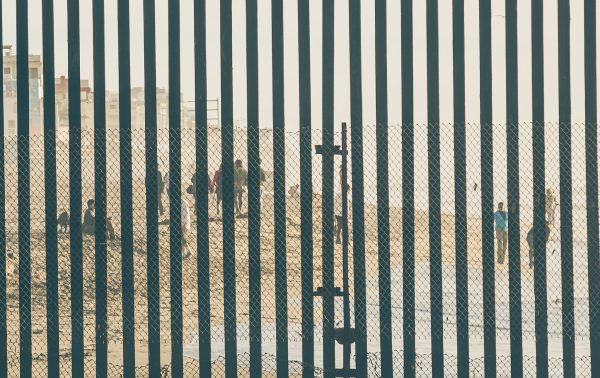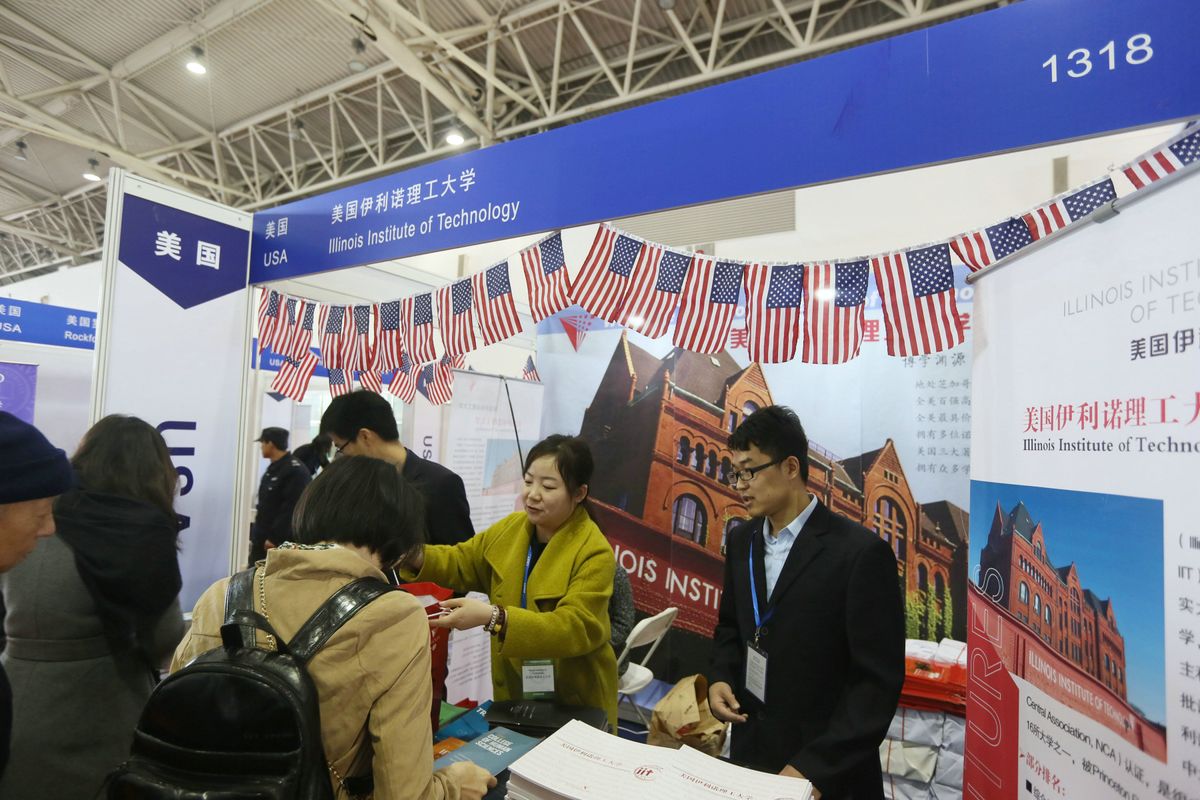Laura Carlsen discusses how Claudia Sheinbaum will navigate a series of domestic challenges and a changing U.S.-Mexico relationship.

US – Mexico Border Fence by Tony Webster is licensed under CC BY 2.0 / Flickr
In June 2024, Mexicans elected a female president, Claudia Sheinbaum to replace Andres Manuel Lopez Obrador. Arguably, Mexico is Washington’s most significant foreign policy partner, playing a central role in two issues that Donald Trump manipulated to win the 2024 presidential election: migration and drugs.
Laura Carlsen, one of Mexico’s most distinguished progressive journalists and political analysts, takes stock of President Sheinbaum’s performance so far and how she plans to deal with Trump. Carlsen is based in Mexico City, where she directs the international relations think tank, Mira: Feminisms and Democracies. She also coordinates knowledge and global solidarity with Just Associates, JASS. Holding graduate degrees from Stanford, she is a dual Mexican-US citizen.
How is the Mexican government taking Trump’s threat of mass deportations?
The Mexican government estimates there are 4.8 million Mexicans in the United States without papers and 11.5 currently with some form of legal residence, so the demographic implications could be enormous. President Claudia Sheinbaum and her cabinet have taken a dual approach to Trump’s threat to immediately begin a campaign of mass deportation after taking office. On the one hand, the government—along with many analysts in the United States—has questioned how far Trump will actually go, pointing out that the U.S. economy would suffer, experiencing labor scarcity, loss of tax revenues, inflation, and deceleration if Trump carries out the threat. Mexico is preparing facts-based studies to discuss the real impact on the U.S. economy and society with Trump’s team and find other solutions.
That doesn’t mean that the Mexican government isn’t taking it seriously though. Several days ago, Sheinbaum warned Mexicans in the United States that they are facing “a new reality” as of January 20. On this side of the border, Mexico is actively preparing for the possibility of mass deportation. Although we don’t yet have all the details, the government is working on plans to receive returning Mexicans, including reducing paperwork and obstacles to reincorporation in schools and employment, and some sort of support. The Secretary of Foreign Relations Juan Ramon de la Fuente announced measures for Mexicans residing in the United States, including a “panic button” to alert the nearest consulate and relatives if apprehended for deportation, and know-your-rights campaigns. Consulates have already registered a spike in queries and widespread fear in immigrant communities. With Tom Homan as border czar—founder of the family separation policies that stripped children from their parents with many still not reunited after years of searching—concerns run deep. The government has also been talking to Central American countries to develop plans for safe return to other countries of origin. The threat to apply a 25 percent tariff on all Mexican exports to the US (80 percent of Mexico’s trade) has increased pressure to accept and accommodate deportees even from other countries.
In 2016 after Trump’s first election, we organized a “caravan against fear” along the border on the U.S. side to register reactions in immigrant communities. Families were literally afraid to leave their homes and mixed-status families faced the disintegration of the home. Daily routines fell apart and the stress was palpable. This time around threatens to be worse and no matter how fast deportation proceeds or how deep it goes, millions of lives—especially children’s—will be irreparably traumatized.
Do you think the results of this policy will depart significantly from that of Obama and Biden?
It is a fact that Biden continued Trump’s hardline immigration policies and by the end of his administration had surpassed the first Trump administration in deportations. A new report states there were 271,000 deportations in fiscal year 2024, more than Trump’s peak year of 2019 and only less than Obama in 2014. That the highest levels of deportation have occurred under Democrats reveals the paradox of Trump’s accusing Biden of “open borders.” This line, repeated over and over and often embellished with outright lies due to ignorance or indifference to the truth, seems to have swayed millions of voters to vote for Trump.
Biden did not significantly change Trump immigration policy, although he quickly reversed some Trump measures including child separation, safe third-country agreements and the Muslim ban and increased legal immigration and refugee resettlement. Since his administration continued detention policies, his actions had little or nothing to do with high migratory flows to the US during his administration. Corporate extractivism, the profound inequality and poverty caused by neoliberal policies in the Global South, violence, and displacement caused by climate change are among the primary causes of increased immigration to the US. They are structural causes inherent in the global system and as such will not reverse, although there may be temporary fluctuations.
Although there have been more apprehensions at the border, many are repeat attempts, and the numbers are neither unprecedented nor in any way threatening. The “backlash” against immigration evident in the 2024 campaign was almost completely a result of the fomentation of racist and nativist fears. It is interesting to note that districts with the highest Trump vote often correlated with very low immigration, meaning that these voters have little direct contact or impact from immigration in their daily lives and yet were convinced that immigrants pose a threat to the American “way of life.”
Since at least Bill Clinton, the Democrats made a strategic decision to abandon the defense of human mobility and human rights in migration and embrace the Republicans’ national security framework that presents immigration as a threat. Although both parties now employ similar anti-immigrant arguments and policies and in the last election tried to outdo each other in terms of restriction and repression, there is reason to believe that Trump will institute more hardline policies that will further endanger and disrupt the lives of immigrants. Homan has announced a return to family separation, and anti-immigrant mastermind Stephen Miller is expected to find more ways to cut off rights to asylum, family reunification, and legal residence.
How would you describe AMLO’s approach to the drug cartels? Was it successful or merely a confession that Mexico had lost the war on the cartels? Some say that unless it is able to control the cartels, the Mexican government’s other initiatives at reducing poverty and promoting development will have little positive impact. In other words, the cartels pose a real existential crisis to the future of the Mexican state.
Mexico has always been forced to follow U.S. policy in the war on drugs. Since Richard Nixon announced the war on drugs in the United States in 1971, the policy has been imposed on Mexico through trade sanctions, military strong-arming, and even temporary border closure. The Bush administration’s Merida Initiative, funded by Congress during the Obama administration, tied Mexico to the DEA strategy of drug seizures and arrests or killing of drug lords, known as the kingpin strategy. The Mexican president at the time, Felipe Calderon, agreed to an unprecedented level of U.S. involvement as part of his own war on drugs.
By 2018 it had become clear that the strategy was a disaster for Mexico. Homicide rates shot up, disappearances became a tragic reality for thousands of families, and cartels that had previously restricted activities to drug trafficking to the U.S. market, had been fragmented, causing more violent turf wars between cartels and a diversification into other criminal activities including extortion, human trafficking, and territorial control. AMLO campaigned with the promise to end the war on drugs and address root causes.
Some of the social programs for youth did address some of the root causes, but the kingpin strategy and U.S. control of Mexican security policy continued. The “hugs not bullets” strategy, continuously mocked by conservatives and the macho press, could have been a solid conceptual approach, but due in large part to U.S. pressure it was never really applied. The vicious cycles set in motion by the drug war’s militarized response to cartel crime continued and even deepened. Although the last years showed some reduction in the homicide rate, the AMLO administration registered the highest homicide rate on record, with more than 115,000 disappearances and high rates of injury and gender violence compounding the problem.
The binational effort to defeat cartels militarily in Mexico instead of addressing the economic roots of black-market smuggling and sale of prohibited substances—mostly found within the borders of the United States–led to massive bloodshed in Mexico. It also stimulated more economic gain for the U.S. arms industry and opened the country up to much more expansive U.S. presence in Mexican security. It reinforced social and patriarchal control by emphasizing macho militarist models of domination and militarizing regions where indigenous peoples, rural populations, and urban poor carry out defense of land and resources.
The cartels have historically been a violent and economically powerful corrupting force in the country, but they focused primarily on the lucrative business of trafficking drugs to the U.S. black market. Now they are entrenched in battles for territorial control between rival cartels and with state armed forces. This means that the violence has permeated civic life much more than before.
It can’t be conceived of as a criminal versus state battle because the lines are so blurred. State actors at all levels, including the armed forces, often act with and for the cartels. The war on drugs shifts allegiances and balances of power between cartels, but never advances in terms of common-sense objectives such as abating the flow of illegal drugs, reducing the power of cartels, or increasing rule of law, and it causes more, not less, violence. The last kingpin capture orchestrated by the U.S. government, of El Chapito, Joaquin Guzman López, and Ismael Zambada, is just the latest in a series of hits against specific cartels that trigger inter-cartel battles and end up favoring the first cartel’s rivals.
Can you describe the other key challenges that face the Scheinbaum government and how it plans to tackle them? Aside from the cartels and the undocumented migrants issue, I would imagine the list would include the transgenic corn issue, agrarian reform, climate change, corruption, and gender inequality.
That’s a big question. Her political platform of “100 steps toward Transformation” in reference to the continuation of what AMLO dubbed the Fourth Transformation of Mexico—after Independence, the Reform Period, and the Revolution—includes: A “moral economy” with fiscal control and pension reform; development with well-being and regional perspective and broad infrastructure plans; streamlined policy-making and enforcement; social rights and welfare and reducing inequality, health rights; reducing violence against women and assuring equality; Indigenous and Afromexicans; energy sovereignty, rural development; environment, water and natural resources; science and culture and democracy. Among these, some challenges are more acute than others. Mexico has to make the space to determine its own development and security policy, but continues to be under the U.S. thumb. The policies of immigration repression that Trump demands of Mexico is at heart a tool to keep the Global South under control as capitalism intensifies at an even more predatory and brutal stage. Mexico is under pressure to serve up key natural resources including oil, water, and labor. U.S. policies such as the drug war and Trump’s climate change denial run counter to the stated aims of the new government. Finding ways to stand up to pressure without provoking economic reprisals from a volatile and unpredictable U.S. president with an America First—or rather America Only—view on U.S. domination will be a constant challenge.
Specifically, several controversies are on the horizon. President Sheinbaum has reaffirmed that Mexico has the right to limit the import and prohibit the cultivation of U.S. genetically modified corn to protect native landraces, indigenous rights, health and food sovereignty. Mexico just lost in a NAFTA court on the question of import restrictions. A powerful civil society movement has been working for decades to defend Mexico’s right to make its own decisions on GM corn. Now they will be forced to abide by the decision while continuing to try to protect native corn and customs. There will be more legal and political run-ins on this and related issues, with powerful transnationals such as Bayer/Monsanto seeing Mexico’s bid for food sovereignty as a dangerous global precedent.
Sheinbaum also faces a major challenge in ending discrimination and reducing violence against women, and repairing the relationship with feminist and women’s rights organizations in the country. While declaring support for women’s equality, Sheinbaum inherits the conflicted relationship established by AMLO, who accused women’s groups that protested against violence as being pawns of the conservative opposition and tended to see women’s equality solely in terms of parity in formal representation. The femicide rate continued to be very high throughout his term and yet the government minimized the crisis of gender violence.
Now several feminist leaders form part of the government and Sheinbaum’s platform includes the goal of reducing femicide and preventing gender violence, although without many details on how. In the economic sphere, most of the emphasis is on continuing with existing social programs, which have reduced female poverty somewhat but have not addressed structural discrimination and inequality or patriarchal relations.
In this area, as in most areas, a huge obstacle is that the “Fourth Transformation” under AMLO largely froze out the movements responsible for demanding and making social gains and for electing MORENA. Without the active participation of women’s groups—and indigenous, campesino, urban, environmental, etc. organizations—top-down measures cannot be effective and lasting.
What foreign policy initiatives should we expect from the new administration? Will it provide progressive leadership for the rest of Latin America as well as the Global South? How will it wade into the transnational conflict that now pits Lula and the left and Milei and the right?
AMLO took a leading role in reinvigorating regional South-South ties explicitly with the aim of reducing U.S. hegemony in the region and taking advantage of newly elected left to center-left governments. Later, in his term however, this work declined as the focus shifted back to the United States. Sheinbaum has specifically promised to ”recuperate CELAC” (Community of Latin American and Caribbean States) and strengthen regional ties, work with CELAC on an initiative to provide needed medicines, and work together on a new model for immigration that kind of keeps getting launched and never quite takes off. The relationship with the United States is also listed as a priority. Controlling illegal gun smuggling from the United States to Mexico is a critical issue for Mexico and will continue to be. The new government emphasizes multilateralism and in print anyway wants to strengthen Mexico’s role. This could be positive, but actual efforts have been sporadic and it’s not clear how much emphasis and resources will be devoted to it. Nor is it clear to what degree the new Mexican government, keen on preserving U.S. investment as key to the neoliberal model still very much in place, will buck U.S. hegemony.
How would you compare President Scheinbaum to the other dominant female leader in Latin America, Cristina Fernandez Kirchner of Argentina, in terms of their ability to navigate a culture of male political leadership?
Sheinbaum’s response to Trump’s vow to enact 25 percent tariffs on Mexican exports “on Day One” if Mexico did not do enough to stop immigration and control cartels was firm. She underlined all that Mexico was already doing but also said the nation would develop its own policies and the United States should do the same. This is a departure from the chummy and often subordinate relationship with Trump that AMLO’s foreign secretary, Marcelo Ebrard, and Lopez Obrador projected.
Trump is a public misogynist and has little respect for women, even those who are world leaders (as shown in his treatment of Angela Merkel). Sheinbaum seems to be taking a practical approach in the relationship with Trump that takes into account the need to sustain the bilateral relationship but draws the line at sovereignty. Her best bet is to maintain as much distance as possible.
Globally, so far she looks solid as a leader. She has strong experience as former mayor of Mexico City, and while she is unlikely to be a feminist leader on the world stage, she seems to know how to hold her own. Some other leaders, notably Dilma Rousseff, have underestimated the power of patriarchy, old-boys networks, and misogynist memes with tragic results. The male vote, organized in online clubs and chats with explicitly anti-women’s rights positions that draw on insecurities and a particularly virulent form of modern-day misogyny, elected Donald Trump and Javier Milei. Now they feel vindicated and emboldened globally by these wins.
The irony is that the United States—self-proclaimed as beacon for democracy and progress—proved itself unready to accept a woman in the highest position of power while Mexico—constantly derided as macho– elected its first woman president in a landslide. Now Sheinbaum will have to prove her leadership on the world stage in an increasingly hostile environment for women leaders.
Laura Carlsen is director of the Americas Program of the Center for International Policy and a member of the Mesoamerican Women Human Rights Defenders’ Initiative. Before joining the Americas Program, Carlsen worked in Equipo Pueblo, was a correspondent for Latin Trade magazine, editor of Business Mexico, and a freelance writer. She has been a gender and communications consultant with Just Associates (JASS) and the Nobel Women’s Initiative, and policy consultant and writer for the International Organization for Migrations.







 A photo released on December 17, 2024 showing rescuers responding to an oil spill along the coastline of the Black Sea, caused by the wreck of two oil tankers. © Russian Emergencies Ministry via AFP
A photo released on December 17, 2024 showing rescuers responding to an oil spill along the coastline of the Black Sea, caused by the wreck of two oil tankers. © Russian Emergencies Ministry via AFP